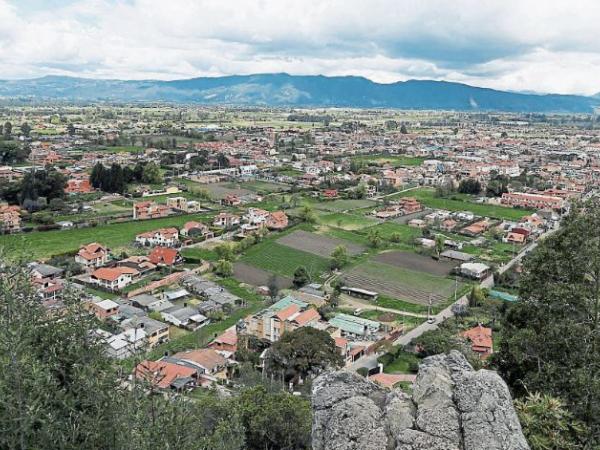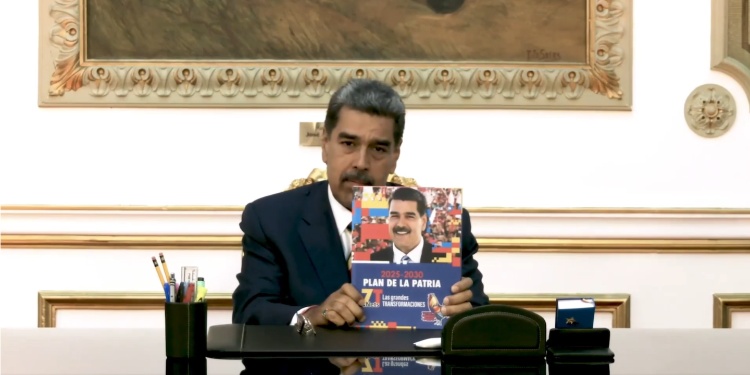After several months of back and forth and warnings about the Government’s alleged intention to shelve the results, the Decentralization Mission finally delivered the report in which they recorded their diagnosis of the current state of the autonomy of the regions and They make several proposals so that territorial development does not depend so much on the decisions that are taken or not taken in Bogotá.
In a document of more than 200 pages, filed a few weeks ago with the National Planning Department, this team of experts put forward nine proposals for consideration by the National Government, ranging from reforming the royalty and participation systems to generating a division political-administrative of the municipalities and departments, understanding their vocations and needs.
For reading: Prosecutors speak of the alleged ‘determining role’ of the Ministry of Finance in the UNGRD case
“The final versions were perfected after a meeting on March 7 and 8 with the Commissioners and their technical teams, which allows for the inclusion in this report of the constitutional, legal and administrative initiatives required by the Mission decree,” they said, while making it clear that this was also discussed with Congress.
Royalties
In this sense they also warn that “the internal regulations provided a vote on the technical details of the proposals by the commissioners, an event that did not occur, but that does not disqualify the relevance of delivering this report,” with which, according to Darío Restrepo, director of the Mission, they hope to strengthen the growth of the regions.
Recategorizing the territory
One of the first proposals that stands out in the Decentralization Mission report has to do with ending the current municipal categorization scheme, which is measured from 1 to 6 and adds a part of special districts and metropolitan areas, to add concepts such as productive vocations and ethnic and environmental characteristics.
“The fundamental objective of this exercise of municipal and departmental categories, which takes into account significant indicators that represent their geographic, demographic, socioeconomic, financial, and environmental characteristics, is that each group has municipalities that are quite similar within it. and that there are defining attributes that differentiate between the different groups,” they said.
More information: Colombians don’t like bosses: 7 out of 10 prefer to work without them
In this sense, a division is added that includes Large Cities, Territorial Nodes, Intermediate Nodes, Urban Centers, Primary Vocation (highly agricultural), Environmental Prevalence and High Ethnic Density; in order to improve the targeting of public policies, differentiated technical assistance by the central Government and the assumption of responsibilities of each of these territories.
In another proposal they highlight the need to have new types of territorial entities that deepen the realities of the territory, highlighting that a methodology has already been adopted for the identification of typologies of territorial entities aimed at the recognition of capacities, as input for: i) the targeting of public policies, ii) differentiated technical assistance by the national Government and iii) the assumption of powers.

Bogota
Royalties and participation
In another section, within the nine proposals, the Decentralization Mission also proposes significant reforms to the General Participation System (SGP), starting by guaranteeing a minimum of 30.5% with respect to the nation’s current income (ICN), to ensure a consistent financing base, allowing adjustments in the SGP growth formula to maintain that percentage.
Read here: Days without VAT: the three proposals that Petro made for the return of these days
Likewise, it suggests separating the SGP into two components: sectorial and territorial, and in this way recognizing the different dynamics of sectorial allocations, which have a specific destination, and territorial ones, which promote autonomy in the use of resources and thus promote more equitable management. efficient use of resources, aligned with the needs and capabilities of each territory.
Regarding royalties, this team of experts stated that territorial autonomy must be respected and its potential to reduce economic gaps increased, for which it suggests eliminating the Collegiate Bodies of Administration and Decision (OCAD) and national procedures that increase transaction costs, facilitating supra-municipal association and the concurrence of resources for joint projects.

Decentralization Mission Report
This reform seeks to replace the current criteria, guiding the allocation of resources towards inter-territorial equity, environmental protection and social inclusion. The beneficiaries will mainly be municipalities and districts, with distribution criteria that favour municipalities with less fiscal capacity and greater ethnic and environmental diversity. Although there was concern about the possibility of this being eliminated at the request of the Government, it was ultimately maintained.
Tax regulation
In order to better advance the distribution of resources, the Mission proposed the creation of the Territorial Economic Convergence Fund (FECET) to compensate for fiscal deficiencies in territories with less economic dynamism. This fund seeks to finance supra-municipal investments that improve connectivity and functional integration between urban and rural areas, thus promoting more equitable and sustainable economic development.
Read also: 79% of Colombian ‘ninis’ do not want to find a job
It would also complement the SGP and the General Royalties System (SGR), providing additional resources to close intradepartmental economic gaps.
Finally, they suggest strengthening access to credit sources for territorial entities and fiscal action, “through: i) the inclusion of the Autonomous Committee of the Fiscal Rule as a new actor in the regulatory framework of subnational fiscal responsibility rules; ii) the extension of coverage in the establishment of primary surplus goals that guarantee debt sustainability; iii) making the Medium-Term Fiscal Framework binding,” among other ideas.
While this document is not binding and goes beyond marking a roadmap does not have much legal weight, the minds behind its implementation recalled that the country has “an enormous task of closing the gaps within cities, the most developed of which are examples of discrimination, fragmentation and social segmentation.”

Regions
“Much of the unviability of large cities is not resolved within them, but rather by building decentralization for socio-territorial equity, population inclusion and decentralization of the development model beyond the Andean center and the city system,” they concluded.
Now the ball is in the Government’s court, which in addition to a diagnosis, now has an ABC on management capacity in the regions and a panel of proposals to improve this reality and promote development in the most remote populations of the national territory.















